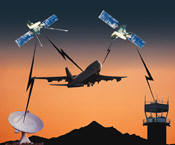
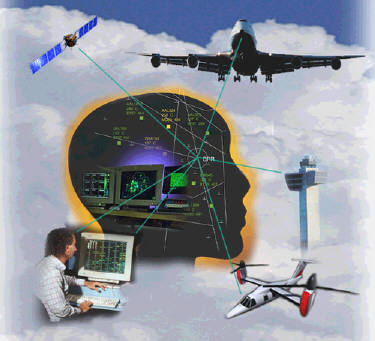
FAA to Congress About Flight Delays:
Details on FAA's new "WSP" & "ITWS" radar systems
by ANN correspondent Richard Harris
As we reported last week, Boeing and the FAA have just presented very different solutions to the dilemma of air traffic jams. Congress has gotten involved, holding House Aviation Subcommittee hearings last month, and Senate hearings this month. Flight congestion at some cities has gotten especially aggravating to lawmakers. Last weekend, U.S. Senator Tom Harkin (D-Iowa) warned that Congress would intervene if Chicago didn't take action to reduce airline delays by July 1 (see "AOPA joins Chicago Airport Delay Task Force," ANN, May 25, 2001)

 Using Boeing satellites, launched by Boeing rockets, Boeing airliners would be directed by Boeing air traffic controllers. Oh, and all those other airplanes out there would be controlled by Boeing controllers, too. (see "ATC System Future: Private Satellites and Controllers, or Just Better Radar?," ANN, May 25, 2001)
Using Boeing satellites, launched by Boeing rockets, Boeing airliners would be directed by Boeing air traffic controllers. Oh, and all those other airplanes out there would be controlled by Boeing controllers, too. (see "ATC System Future: Private Satellites and Controllers, or Just Better Radar?," ANN, May 25, 2001)
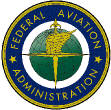 The FAA's answer to the problem: better radar. The FAA wants to put detailed weather data and forecasting images in their control towers, and even overlay it on their radar screens, then coordinate the radar images between controllers system-wide, so that they are all working from common information. According to an FAA statement, "a full 68.7% of [flight delays] occur because of bad weather." (See "Surprise! Weather Equipment Could Shorten Flight Delays," ANN, May 22, 2001). Compared to Boeing's sweeping revamping of the system, or building many new, multi-million-dollar runways, the FAA radar fix could cost far less than $100 million -- the cost of a couple of good-sized airliners -- and pay for itself within a few years.
The FAA's answer to the problem: better radar. The FAA wants to put detailed weather data and forecasting images in their control towers, and even overlay it on their radar screens, then coordinate the radar images between controllers system-wide, so that they are all working from common information. According to an FAA statement, "a full 68.7% of [flight delays] occur because of bad weather." (See "Surprise! Weather Equipment Could Shorten Flight Delays," ANN, May 22, 2001). Compared to Boeing's sweeping revamping of the system, or building many new, multi-million-dollar runways, the FAA radar fix could cost far less than $100 million -- the cost of a couple of good-sized airliners -- and pay for itself within a few years.
Teaming with Massachusetts Institute of Technology (MIT), Raytheon Corp., and Northrop-Grumman, the FAA has been working for the last several years on a handful of weather-radar technologies to boost controllers' ability to precisely identify where bad weather is -- and isn't -- and direct traffic accordingly. They've especially focused on "wind-shear detection algorithms." There are three major enhancements they've developed:
THE TECHNOLOGY:
TDWR (Terminal Doppler Weather Radar), provides faster radar updates than are currently available. When a string of thunderstorms comes marching through a terminal area, controllers cannot safely squeeze a string of arriving planes in between without Doppler radar that can almost instantly indicate any changes in the weather, and pinpoint minute-to-minute shifts in the winds. Today's NOAA "NEXRAD" radar, which updates only about once in every 6 minutes, would be replaced by newer TDWR Doppler radar that is updated every minute.WSP (Weather Systems Processor), adds Doppler radar information to controllers' screens. Tower controllers use a pair of computer-size screens: a "ribbon display," which provides weather information as text, and the "graphic situation display," which paints a rapidly updated, brightly colored, two-dimensional picture of weather conditions, movement and predicted future position of weather cells in relation to an airport's runways.
The FAA's Southwest Region office, which has been testing WPS at Albuquerque, says that WPS is "An add-on to existing aircraft tracking radars [which provides] timely information to controllers and pilots about potentially hazardous microburst and wind shear weather events. The system also improves the management of air traffic in air space near the airport by forecasting gust front-induced wind shifts, detecting precipitation and tracking storms. The result can be increased safety and fewer delays."
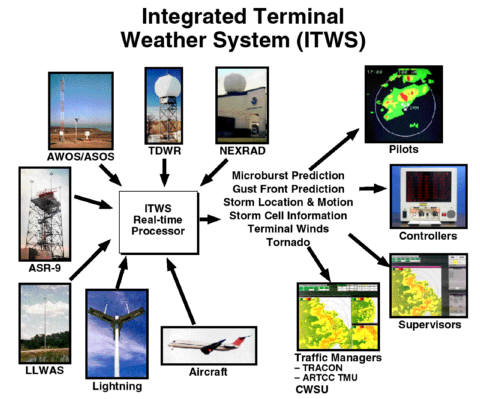
ITWS (Integrated Terminal Weather System), also adds Doppler radar information to controllers' screens, but then combines it with data from all other available sources -- area radar, ground-based wind-and-weather sensors, and other meteorological observations from pilots and ground personnel. The result is a ton of weather information organized into one display. A report by the National Air Traffic Controllers' Association (NATCA) describes ITWS as providing "windshear and microburst predictions, storm cell and lightning information, terminal area winds aloft, runway winds, and short-term ceiling and visibility predictions," giving controllers a much clearer picture of exactly what's going on -- and exactly where weather will be bad or good in the coming half-hour.

A sample of the ITWS imagery available is shown at right, in a snapshot taken from the New York terminal system currently being tested. The thin, black lines show geographic boundaries, airport runways, and airways boundaries; dotted, thin, black range circles show distance from an airport or other focal point. According to MIT, "the cyan lines indicate the location and anticipated motion of a storm cell. Solid lines indicate the leading edge of the storm cell. The dotted lines indicate the projected locations of the leading edge 10 and 20 minutes in the future. Purple lines indicate the size, shape, and orientation of a gust front." Yellow panel lights (three of them, together, at top of the display) warn that lightning is active within 20 miles of each of the three big New York City area airports.
THE RESULTS:
At present, controllers simply give bad weather a wide berth, often causing long delays, complicated re-routing, wasted fuel and time. A few major airports tangled in bad weather on any given day can wreak havoc with the entire national airline network. In response to bad weather at one major airport, area controllers divert pilots to holding patterns or alternate airports, and try slowing and spreading out aircraft, or simply keeping them on the ground at their point of departure -- putting pressure on the air transportation network that backs up and ripples throughout the system.
FAA and MIT's Lincoln Lab claim that the two-fold benefit is "increased safety" as controllers can see bad stuff on their screens and keep planes clear of it, and have the power to "more effectively manage aircraft arrivals and departures when weather hazards are present," allowing them to be more selective in how they direct pilots -- precisely squeezing them through the safe places in the bad weather.

WPS (estimated cost: $100,000 per airport):MIT claims gains "in terms of aircraft delay-hour reductions and corresponding dollar benefits. The analysis indicates that these benefits will total approximately $18 million per year, given Year 2000 expected traffic counts at the 34 planned WSP airports" -- 5 times what the system would cost.
Albuquerque's "Sunport" was the first airport to get a "limited production system" WSP, as developed by Northrop-Grumman. Two additional limited production systems are at airports in Austin, Texas, and Norfolk, Va.
ITWS (estimated cost: $300,000 per airport):
MIT says its final testing of ITWS at New York City-area airports (JFK, Newark, LaGuardia and Teterboro) "appears to be a success," adding, "ITWS saved airlines and passengers more than $150 million by reducing 49,000 hours' worth of flight delays in the New York area in 2000."
A statement from MIT says that they...
"...installed it at the New York airports as a demonstration in 1998, with additional funding from the Port Authority of New York and New Jersey. Similar tests were carried out in Memphis, Dallas and Orlando. The scientists introduced several improvements to ITWS in the summer of 1999. It will be replaced for good in 2002, when the FAA's production version, built by the Raytheon Corporation in Lexington, Mass., will be ready."
WILL IT REALLY CHANGE THINGS?
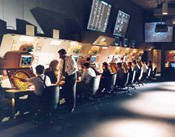
The FAA's 2000 Terminal Area Forecast and 2001 Airport Capacity Benchmark Report cite New York's JFK airport as "the 7th most delayed airport in the U.S. in 2000 (based on FAA OPSNET reported delays)." The report adds, "Kennedy's current scheduled traffic peaks can be handled efficiently during good-weather conditions, but scheduled traffic exceeds adverse-weather capacity for more than 5 hours of the day.... . On adverse weather days, about 9% of the flights are delayed significantly (more than 15 minutes)." However, ITWS notwithstanding, the FAA reports combine to indicate that "procedure, airspace, and technology improvements" are only "expected to improve good-weather capacity by 2% and adverse-weather capacity by 3% over the next 10 years."
Nevertheless, a report in USA Today (May 21, 2001) cites the Executive Vice President of Dallas-Ft.Worth International airport (DFW), Douglas Crites, describing ITWS as "a big solution [that] is out there just staring us in the face." Crites claims, "In the first year, it saved our major carriers $15 million." If true, this could help protect DFW's status as one of the nation's most important, and growing, airline hubs -- relieving pressure for further costly runway development (at a cost of millions), or airline relocation elsewhere.
WHAT NOW?

In all, about 60 airports are targeted for upgrades - split about 50/50 between the two systems. The key will be Congressional budget authorizations. At present, Congress is sitting on the money, and Congressional hearings are underway to review the air traffic system. Boeing's pending announcement of its development of a satellite-based private ATC system, leaked early -- and the FAA's response touting the new, relatively-cheap radar enhancements -- may both be aimed at influencing Congressional impressions and decisions. Both the House and Senate Aviation Subcommittees have held hearings on aviation delays in the last couple of months, and the pressure is on for answers.
There's a lot at stake. Boeing's approach could make it richer and far, far more powerful in the airline industry -- and in aviation generally. Already the dominant force in airliner manufacturing (especially now that they also own McDonnell-Douglas), Boeing could wind up with the keys to the system. Imagine Boeing airliners being given preference in the Boeing ATC system. That could boost Boeing sales. All Boeing would have to do is declare that Boeing planes have "more compatible systems," resulting in preferential treatment.
But the savings might also be substantial, if the badly-inbred, too-often-self-serving FAA system could be blown away with a blast of fresh air and original thinking from an outside source. Its notoriously archaic systems, and infamously sluggish pace of modernization might do well to be dumped in favor of an enterprising, eager, high-tech company.

And the Air Traffic Controllers Say...
NATCA -- the ATC controllers union -- has a major stake, too. Its 15,000 government employees are among the highest paid work force in the U.S. government, and would likely lose a lot if the system was privatized. NATCA is pledged to defend their careers. In a recent Senate hearing, union President John Carr said, "Air traffic control is an inherently governmental function." Defending the U.S. ATC system, he added, "The United States controls over half the world's air traffic," describing the system "as the safest and most sophisticated on the planet."
NATCA says airline congestion is chiefly due to "the core problem of too many planes and too little concrete." In Congressional hearings last month, citing the FAA's 2001 Airport Capacity Benchmark Report as proof, NATCA reps said that "continuing upgrades, and new technology and air-traffic procedures, while ensuring a safe, reliable system, will only increase capacity a fraction as much as the construction of new runways."
Meanwhile traffic congestion continues to grow as airlines continue to consolidate and coalesce around a handful of overburdened hubs at key airports -- mostly in densely populated urban areas with little room for expansion.
~RH
For more information:
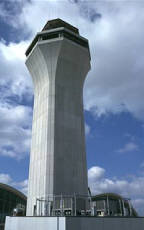
FAA:
- - - - - - - - - - - - - - - - - - - - - - -
MIT Lincoln Lab programs MIT Lincoln Lab abstracts:
"MIT researchers save airlines and passengers $150m,
reduce weather delays at New York airports"
ITWS Situation Display, explained
National Air Traffic Controllers' Association (NATCA)
www.natca.org/MediaCenter/PressReleases/PressListing.asp?order=Date_Published&sort=DESC&submit=Submit
NATCA ITWS summary: www.natca.org/safety/SafetyTechIssues/Detail.asp?ID=48
NATCA WSP summary: www.natca.org/safety/SafetyTechIssues/Detail.asp?ID=63
JFK Airport: www.panynj.gov/aviation/jfkframe.HTM
DFW Airport: www.dfwairport.com/